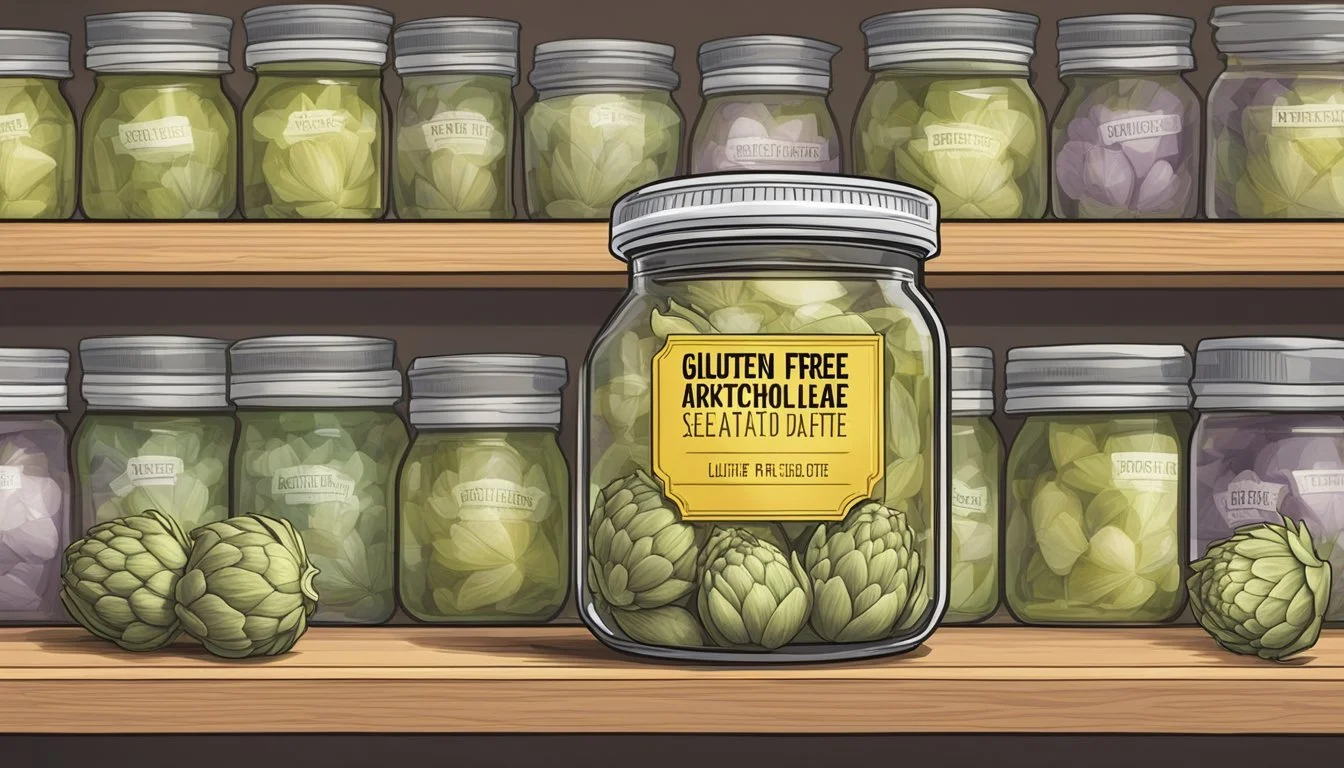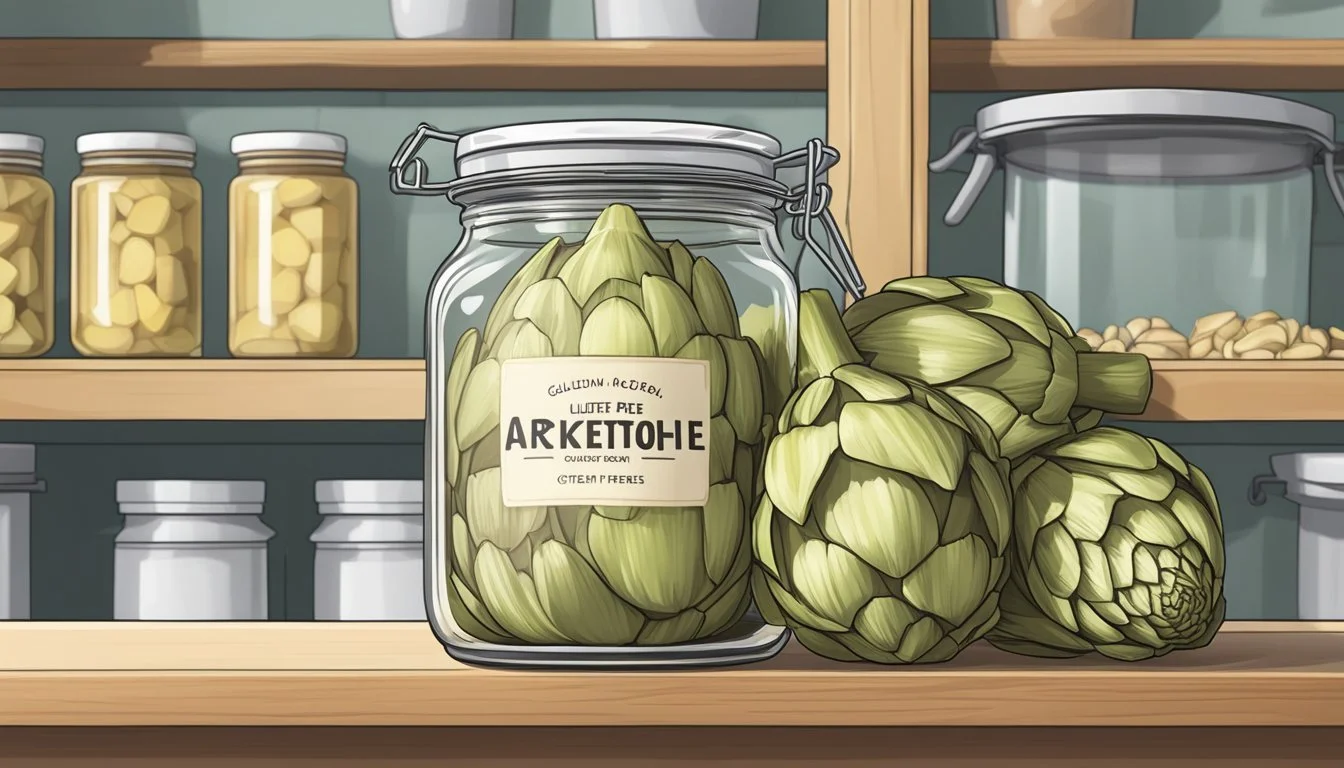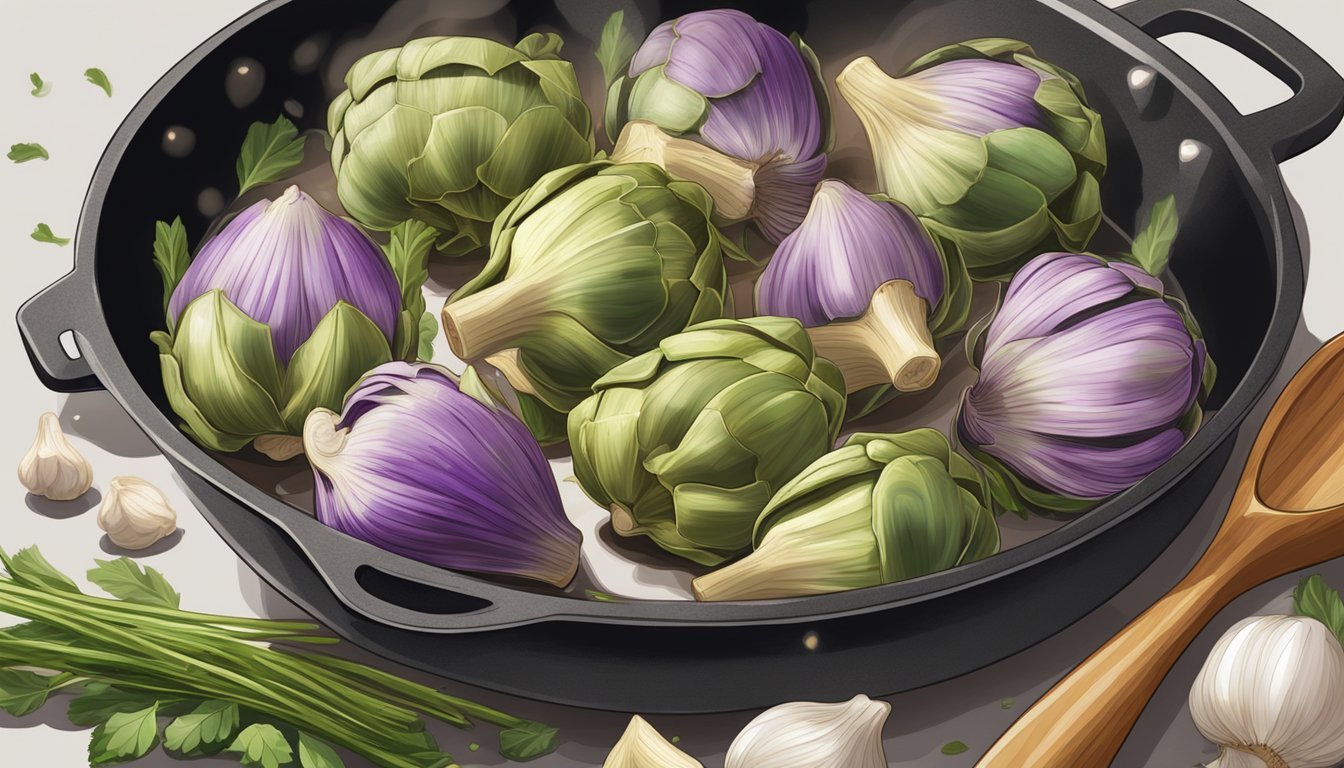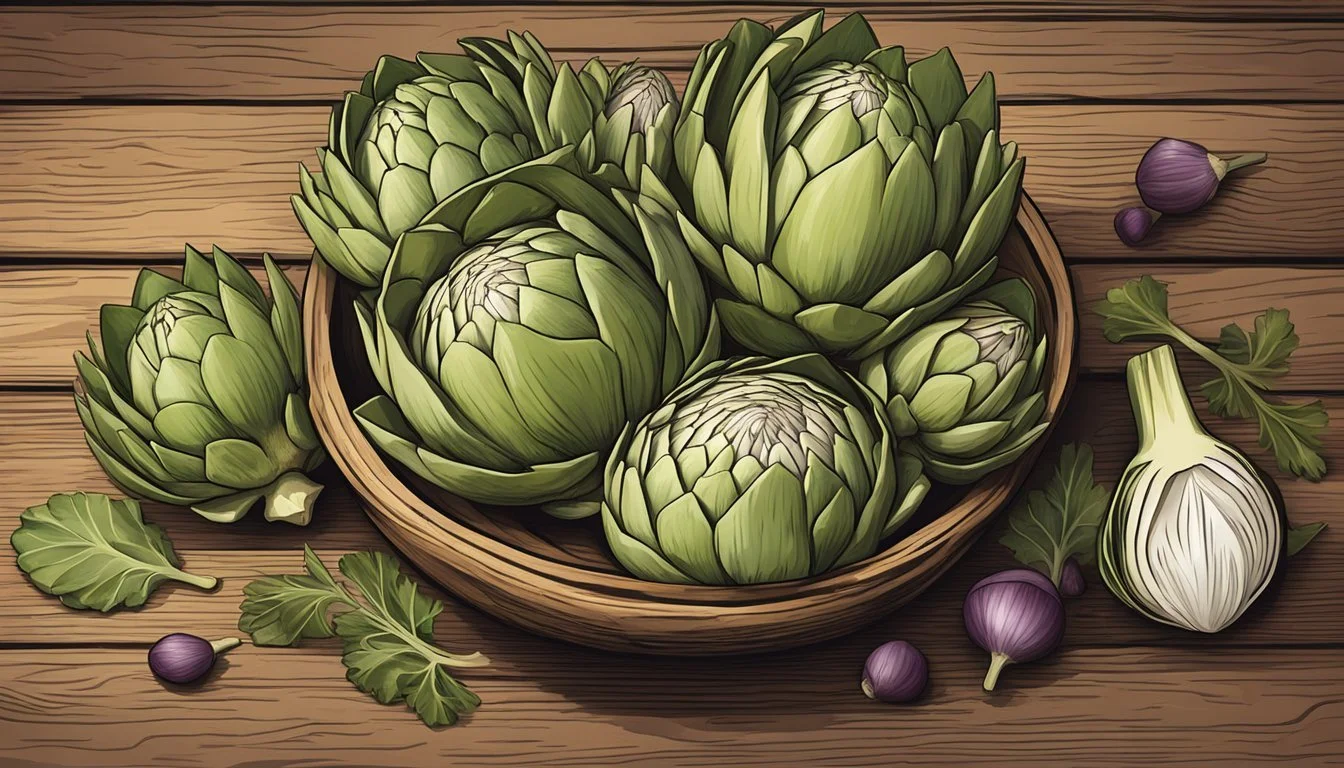How Long Do Gluten-Free Artichoke Hearts Last?
Storage Tips and Shelf Life
Artichoke hearts are a beloved addition to many dishes, offering nutritional benefits and a delicious flavor. For those following a gluten-free diet, it's essential to ensure that their artichoke hearts are safe to consume and know how long they will last. Gluten-free artichoke hearts, when stored properly in the refrigerator, can last for up to one week after opening.
Whether you're using them fresh, pickled, or from a can, the shelf life can vary based on how they are prepared and stored. Unopened canned artichoke hearts can remain fresh for up to two years when stored in a cool, dry place. Once opened, storing artichoke hearts in an airtight container is crucial to maintain their freshness and prevent contamination.
The versatility of artichoke hearts makes them a great option for various gluten-free recipes, from salads to main dishes. By understanding how to store them correctly, you can ensure their longevity and maintain their nutritional benefits, making your meals both safe and satisfying.
Understanding Artichoke Hearts
Artichoke hearts are a nutritious vegetable known for their unique flavor and health benefits. They are rich in fiber, vitamins, and minerals, making them a valuable addition to a balanced diet.
Origins and Varieties
Artichoke hearts come from the globe artichoke, a thistle plant native to the Mediterranean region. This species has been cultivated for centuries due to its edible flower buds.
There are several varieties of artichokes, such as Green Globe, Romanesco, and Imperial Star. Each type offers a slightly different taste and texture, but all share the same core nutritional benefits. When selecting artichokes, look for firm, tightly packed leaves.
Nutritional Profile
Artichoke hearts are low in calories yet high in essential nutrients. One serving of artichoke hearts (about 100 grams) typically contains:
Calories: Approximately 47
Fat: 0.1 grams
Carbohydrates: 11 grams
Protein: 3 grams
Fiber: 5 grams
Vitamins: Vitamin C, Vitamin K, Folate
Minerals: Potassium, Magnesium, Phosphorus
These nutrients contribute to various bodily functions, from maintaining energy levels to supporting heart health.
Benefits of Artichoke Hearts
Including artichoke hearts in your diet can offer several health advantages. Their high fiber content aids in digestion and promotes a healthy gut. They are also rich in antioxidants, which help combat oxidative stress and reduce inflammation.
The significant amount of potassium found in artichoke hearts supports cardiovascular health by helping regulate blood pressure. Furthermore, the presence of folate is crucial for DNA synthesis and cell growth, particularly important during pregnancy.
Besides their nutritional benefits, artichoke hearts are versatile in the kitchen. They can be baked, grilled, steamed, or added to salads and pasta dishes, making them an easy and delicious way to boost nutrient intake.
Gluten-Free Diet Basics
A gluten-free diet involves the elimination of gluten, a protein found in wheat, rye, and barley. This section highlights what defines a gluten-free diet, its health benefits for those with celiac disease and gluten sensitivity, and common gluten-free ingredients to look for.
Defining Gluten-Free
A gluten-free diet excludes all foods containing wheat, rye, and barley. Gluten is a protein that gives dough its elasticity and helps it rise. Eliminating gluten means avoiding products like bread, pasta, and certain processed foods.
Many naturally gluten-free foods include fruits, vegetables, meat, poultry, fish, beans, legumes, and most dairy products. Reading labels carefully is essential to ensure that processed foods are truly gluten-free, as gluten can be hidden in additives and preservatives.
Health Benefits for Celiac Disease and Gluten Sensitivity
For individuals with celiac disease, consuming gluten triggers an immune response that damages the small intestine lining. This can lead to severe digestive issues and other health problems. A strict gluten-free diet helps in managing symptoms and promoting intestinal healing.
People with non-celiac gluten sensitivity experience symptoms like bloating, diarrhea, and fatigue when consuming gluten, but without the intestinal damage seen in celiac disease. Avoiding gluten can alleviate these symptoms considerably. Maintaining a gluten-free diet can lead to improved overall health and quality of life for these individuals.
Common Gluten-Free Ingredients
Several grains and starches are naturally gluten-free, making them safe alternatives for those on a gluten-free diet. These include:
Rice
Corn
Quinoa
Buckwheat
Amaranth
Tapioca
Additionally, many flours made from nuts, beans, and roots like almond flour, chickpea flour, and coconut flour are gluten-free. These ingredients can be used to make a wide variety of baked goods and other products without compromising dietary restrictions.
Gluten-free labels are important indicators when buying packaged foods. Certified gluten-free products have undergone rigorous testing to ensure they meet safety standards. Always verify ingredient lists to avoid any sources of hidden gluten.
Selecting and Preparing Artichoke Hearts
Artichoke hearts can be found in various forms, including fresh, canned, and jarred. Each type has its own preparation methods and considerations, which influence prep time and cook time.
Fresh vs Canned vs Jarred
Fresh artichoke hearts require more effort to prepare. You need to trim and clean the artichokes, removing tough outer leaves and thorns. Fresh artichokes must be cooked before the hearts are tender enough to eat.
Canned artichoke hearts are convenient and ready to use. They are typically packed in water or brine, which may affect their flavor. These are pre-cooked, reducing the prep time considerably.
Jarred artichoke hearts are often marinated in oil and seasonings, adding extra flavor. Like canned ones, they are ready-to-eat, making them ideal for quick recipes. Jarred varieties might be slightly more expensive due to the added seasonings.
Prep Time and Cook Time
Fresh artichokes often take the longest prep time. Trimming, cleaning, and boiling or steaming can take up to 45 minutes.
Canned and jarred artichoke hearts significantly reduce prep time. Draining and rinsing can be done in less than 5 minutes. Since they are pre-cooked, they typically need only minimal additional cooking time, if any.
Total preparation time varies based on what dish you are making. Simple dishes might take around 10-15 minutes with canned or jarred hearts. In contrast, complex recipes with fresh artichokes could take an hour or more.
Preparation Methods
Boiling or steaming fresh artichokes is common to soften them before using their hearts. After boiling, the tender hearts are removed and can be used in various recipes.
Roasting or baking can enhance the flavor of artichoke hearts, whether fresh, canned, or jarred. For baking, you can coat them in oil, garlic, and herbs, then roast at 375°F for about 20 minutes.
Air frying is a modern method suitable for canned or jarred hearts. Coat them in breadcrumbs and cook at 370°F for 10 minutes, flipping halfway through.
Marinating canned or jarred artichoke hearts involves soaking them in a mixture of olive oil, lemon juice, and herbs. This adds depth of flavor and can be done in as little as 30 minutes.
Storage and Preservation
Proper storage of gluten-free artichoke hearts can significantly extend their shelf life and maintain their quality. Key methods include refrigeration, freezing, and preventing spoilage through appropriate handling.
Refrigeration and Shelf Life
Refrigerating gluten-free artichoke hearts is essential for short-term storage. To maximize freshness, keep them dry and store in airtight containers or plastic bags. The ideal refrigerator temperature is between 32-40°F (0-4°C).
Stored this way, artichoke hearts can last up to a week. Occasionally checking their condition helps prevent early spoilage. If any moisture accumulates in the storage container, dry the artichoke hearts to avoid decay.
Freezing Artichoke Hearts
For long-term preservation, freezing is highly effective. Start by blanching the artichoke hearts in boiling water for a few minutes, then cool them rapidly in ice water. Once blanched, drain and dry them thoroughly.
Wrap each heart in parchment paper to prevent sticking and place them in airtight containers or heavy-duty freezer bags. Label the containers with the freezing date for reference. Properly frozen, artichoke hearts maintain their quality for several months. Flash freezing can be used for better texture preservation.
Preventing Spoilage
Preventing spoilage begins with proper handling. Always keep artichoke hearts dry to reduce moisture-related decay. Excess moisture can lead to spoilage, so using damp paper towels is advisable when necessary.
Inspect stored artichoke hearts regularly for any signs of mold or discoloration. If spoilage is noticed, remove the affected pieces immediately to prevent it from spreading. Keep storage containers clean and ensure air circulation, especially in the refrigerator, to prolong freshness.
Employing these techniques ensures that gluten-free artichoke hearts remain fresh and safe for consumption, maximizing their shelf life whether refrigerated or frozen. Proper handling and regular checks are key to preventing spoilage and maintaining quality.
Cooking with Artichoke Hearts
Artichoke hearts are a versatile ingredient in gluten-free cooking, offering a delightful combination of flavor and texture. Using the right seasonings and cooking methods can elevate artichoke hearts in various recipes, whether you are baking, frying, or air frying them.
Gluten-Free Recipes and Ideas
Gluten-free fried artichoke hearts make an excellent appetizer. To prepare them, coat artichoke hearts with a mixture of gluten-free all-purpose flour, beaten eggs, and ground rice cereal. Season with Italian seasoning, dried thyme, marjoram, and rosemary. Fry until golden brown and crispy.
For a healthier option, air fryer artichoke hearts are ideal. Brush them with olive oil and season with garlic powder, onion powder, and Italian seasoning. Cook at 390°F for about 5 minutes, turning halfway through to ensure even cooking.
Seasoning and Flavor Enhancement
Enhancing the flavor of artichoke hearts requires thoughtful seasoning. Commonly used seasoning includes garlic, kosher salt, black pepper, and Italian herbs such as oregano, basil, and parsley.
For a more complex flavor profile, consider adding grated parmesan cheese, red pepper flakes, and nutritional yeast. A simple blend of olive oil, lemon juice, and minced garlic also works well. Combine dried basil, oregano, and parsley for a classic Italian touch.
Alternative Cooking Methods
There are several ways to cook artichoke hearts, each offering a unique taste and texture. Baking provides a rich and deep flavor. Coat the artichokes with breadcrumbs, parmesan cheese, and Italian seasonings. Drizzle with olive oil and bake at 325°F until golden.
If you prefer dairy-free and vegan methods, roast artichoke hearts in the oven with olive oil, garlic, and lemon juice. This method highlights the natural flavors without needing cheese or eggs.
Air frying offers a quicker cooking option. Simply season the artichokes, place them in the air fryer basket, and cook at high heat for a few minutes to achieve a crispy outer layer while keeping them tender inside.
Serving Suggestions
Gluten-free artichoke hearts can be served in a variety of ways tailored to different occasions, enhancing their natural flavor and versatility. Below are some ideas for incorporating them into appetizers and main dishes and pairing them with other foods and events.
Appetizers and Main Dishes
Artichoke hearts are perfect as both appetizers and main dishes due to their ease of preparation and high nutritional value.
Appetizers: For a quick and tasty finger food, crispy baked or air-fried artichoke hearts turn golden brown and crunchy. Pair with a dairy-free dipping sauce for a vegan option. Alternatively, stuff them with a mixture of breadcrumbs, herbs, and cheese for a flavorful bite.
Main Dishes: Incorporate artichoke hearts into a rich pasta dish or bake them with marinara sauce and a sprinkle of Parmesan for an Italian-inspired meal. Roasted artichoke hearts can be served alongside seasoned chicken or fish, providing a dish that is both nutritious and tasty.
Pairings and Occasions
Pairing artichoke hearts with the right foods and occasions can elevate the meal experience.
Pairings: These vegetables complement a variety of dishes. Serve with other roasted vegetables or on a platter with olives, sun-dried tomatoes, and gluten-free bread. They also pair well with creamy feta or dairy-free dips, making them a versatile addition to any menu.
Occasions: Artichoke hearts are suitable for both casual and elegant gatherings. They make an impression at holiday tables or special events when served as hors d'oeuvres. For a casual occasion, such as a potluck or picnic, include them in simpler recipes that are easy to share and enjoy.
By catering to different tastes and uses, gluten-free artichoke hearts can be a delightful addition to any meal, no matter the occasion.
Health Implications
Including gluten-free artichoke hearts in your diet can positively influence various aspects of health, particularly digestive health, liver function, and weight management.
Digestive Health
Artichoke hearts are high in fiber, making them beneficial for digestion. The fiber content acts as a prebiotic, promoting the growth of healthy gut bacteria.
This improved gut health can lead to better overall digestion. Additionally, a diet high in fiber can help alleviate constipation and keep the digestive tract functioning smoothly.
Artichoke hearts also contain inulin, a type of fiber that specifically aids in digestive health by increasing the levels of beneficial bacteria. Including them in your meals can contribute to a happy, healthy gut.
Impact on Liver Function
Artichokes contain compounds such as cynarin and silymarin, which have been shown to support liver function.
These compounds help in detoxifying the liver and supporting its ability to process fats and remove toxins. Regular consumption of artichoke hearts may improve liver enzyme levels, contributing to better liver health.
The antioxidants present also play a role in reducing liver inflammation and protecting against liver diseases.
Weight Management
Artichoke hearts are low in calories but high in fiber, making them an excellent choice for weight management. The high fiber content can help keep you feeling full, reducing the likelihood of overeating.
Their low-calorie nature means they can be included in various recipes without significantly increasing caloric intake. This makes them suitable for those looking to maintain or lose weight.
Adding artichoke hearts to meals can make them more satisfying, aiding in better portion control and healthier eating habits.
Creative Gluten-Free Artichoke Recipes
Gluten-free artichoke recipes can create delicious and versatile dishes that cater to various tastes and meal preferences. Below are some ideas for transforming artichoke hearts into delightful culinary creations.
Baked and Crispy Artichokes
Baking artichoke hearts creates a tender inside with a golden brown, crispy exterior. Start by coating the artichoke hearts in a mixture of gluten-free breadcrumbs, grated parmesan cheese, and spices.
Preheat the oven to 400 degrees Fahrenheit. Arrange the coated artichokes on a baking dish lined with parchment paper. Bake for 15-20 minutes until they are crisp and golden brown.
Serve warm with a side of marinara or a tangy aioli, made with mayonnaise and lemon juice, for dipping. This method produces a lower-calorie dish compared to frying while retaining a satisfying crunch.
Air Fryer Artichoke Hearts
Using an air fryer creates a crisp texture with less oil. Mix gluten-free almond flour and tapioca flour for a light breading.
Dip artichoke hearts in beaten eggs, then coat them with the flour mixture. Preheat the air fryer to 375 degrees Fahrenheit. Arrange the artichoke hearts in a single layer in the air fryer basket.
Cook for 12-15 minutes, shaking halfway through to ensure even cooking. The result is crunchy, flavorful artichoke hearts that are perfect as a snack or a side dish, and they fit seamlessly into a gluten-free diet.
Dips and Sauces
Artichoke hearts shine in creamy, crowd-pleasing dips and sauces. For a classic spinach artichoke dip, combine finely chopped artichokes and spinach with mayonnaise, sour cream, cream cheese, shredded mozzarella, and parmesan cheese.
Mix thoroughly and pour into a baking dish; bake at 350 degrees Fahrenheit for 25-30 minutes until bubbly and golden.
Alternatively, sauté artichoke hearts with garlic, then blend with marinara or a lemony aioli for a flavorful sauce.
Serve these dips and sauces with gluten-free bread or crackers for a perfect appetizer or party dish.










